
The Moneylender and His Wife Louvre Museum Paris Renaissance art, Classic paintings
The Money Changer and His Wife painting by Massys Learn about this topic in these articles: discussed in biography In Quentin Massys.Man and the Courtesan and The Money Changer and His Wife. Christus Salvator Mundi and The Virgin in Prayer display serene dignity.

The money changer with his wife by Quentin Metsys The hidden Symbols in the Arts YouTube
"The Money Changer and His Wife" by Quentin Matsys depicts a man weighing the jewels and pieces of gold at a table. His wife sits next to him, distract from her book. The couple is not dressed as members of the nobility but rather as well-to-do citizens of Antwerp, where the painting was made.
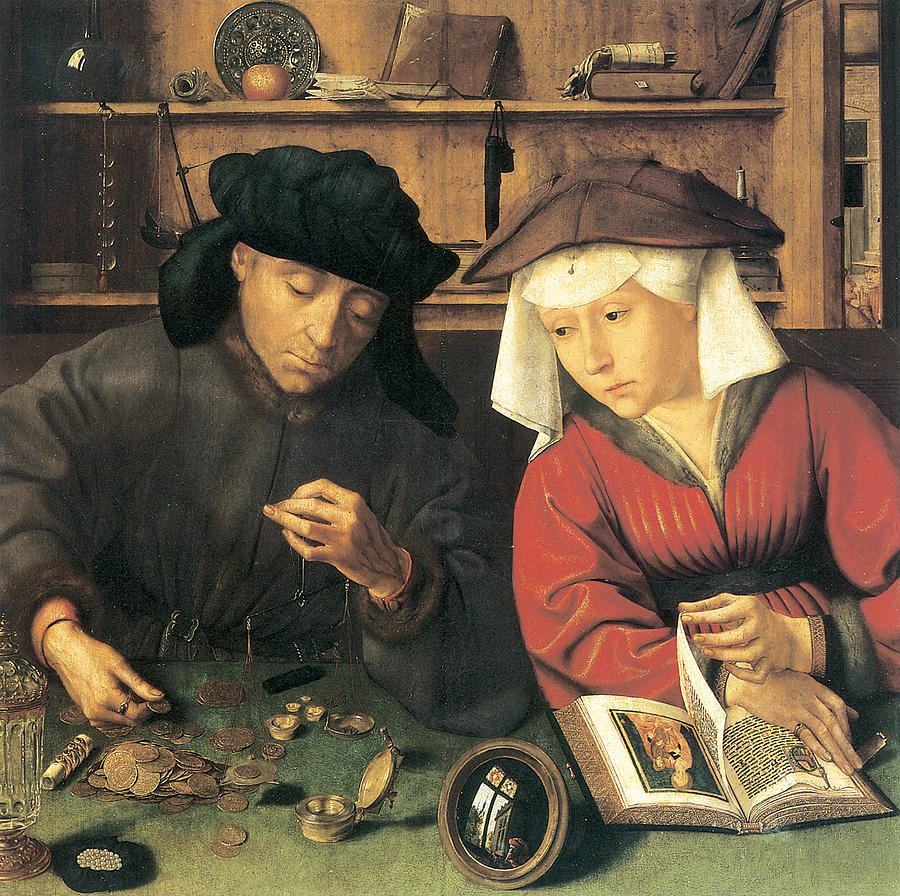
Money Changer and His Wife Painting by Quentin Metsys Pixels
This 1514 painting by Quentin Metsys is beautiful and interesting, preserved in the Louvre and entitled 'The money changer with his wife'.The two protagonist.

Marinus van Reymerswale The money changer and his wife (1540)
The Money-changer and his Wife is an early example of the genre painting which would flourish in Flanders and the northern Netherlands over the course of the 16th century. Seated behind the table, and each sliced on one side by the frame, the figures are set back from the front edge of the painting. Although sophisticated in their nuances of.
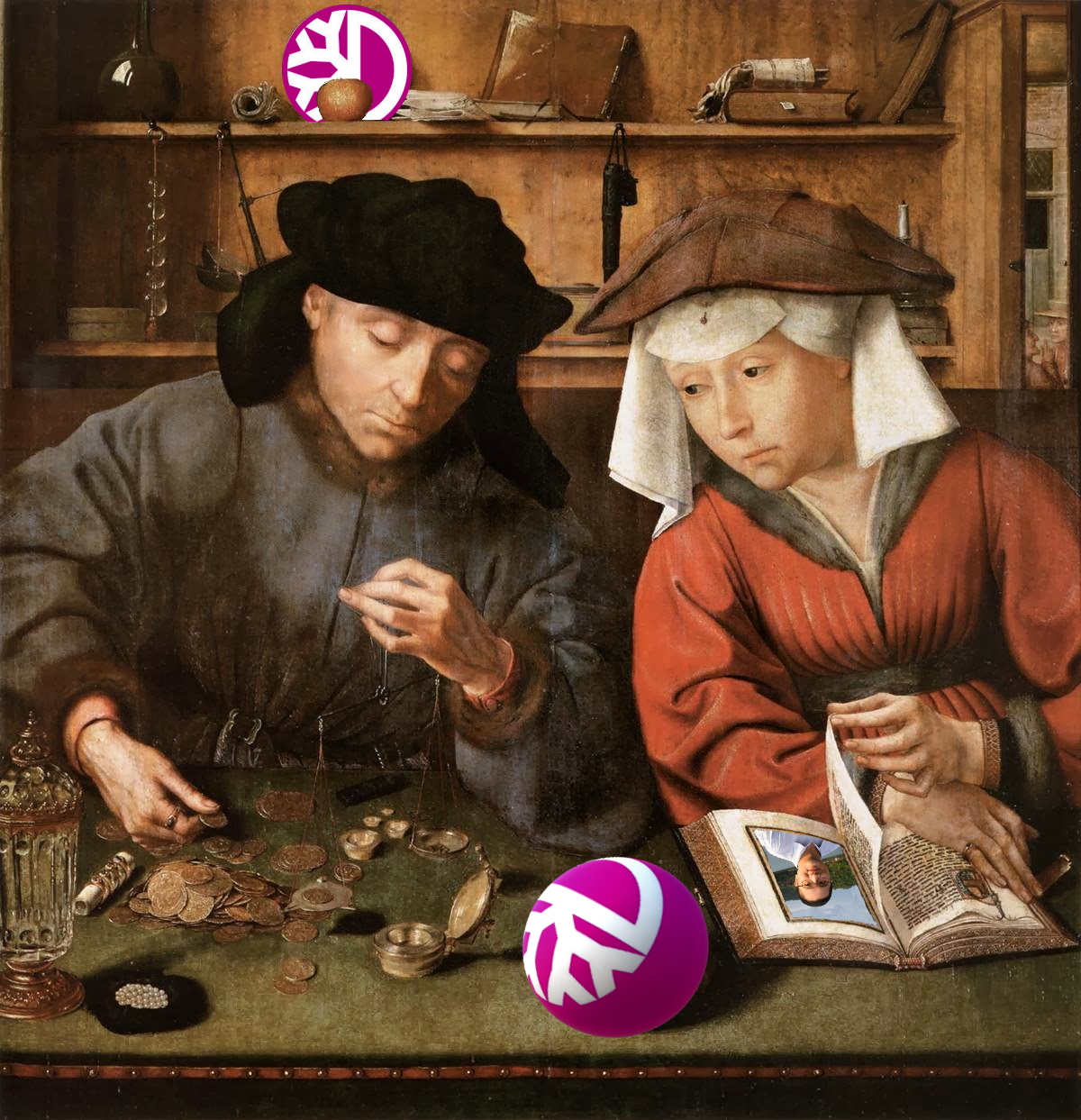
The money changer and his wife quentin massys Defichain in the history of art
His works include A Portrait of an Elderly Man (1513), The Money Changer and His Wife (1514), and The Ugly Duchess (1515). The Ugly Duchess is perhaps the best-known of his works. It served as a basis for John Tenniel's depiction of the Duchess in Alice's Adventures in Wonderland. It is likely a depiction of a real person with Paget's disease[1.

Quentin Massys, The Moneychanger and His Wife (1514), detail. Louvre >> http//www.louvre.fr/en
The Money Changer and His Wife (1514) Oil on panel, 71 × 68 cm Louvre Abu Dhabi. Matsys work is considered to contain strong religious feeling—characteristic of traditional Flemish works—and is accompanied by a realism that often favored the grotesque. Matsys' firmness of outline, clear modelling and thorough finish of detail stem from Van.

Quentin Metsys Il cambiavalute e sua moglie particolare / The Money Changer and His Wife detail
The Money Changer and His Wife, 1514 Quentin Matsys Rather than a descriptive work documenting the subject's profession or contemporary religious practice, this painting is an allegorical and moral work, condemning avarice and exalting honesty, as is shown by emblems of the vanity of life and Christian symbols like the scales of the Last Judgment.
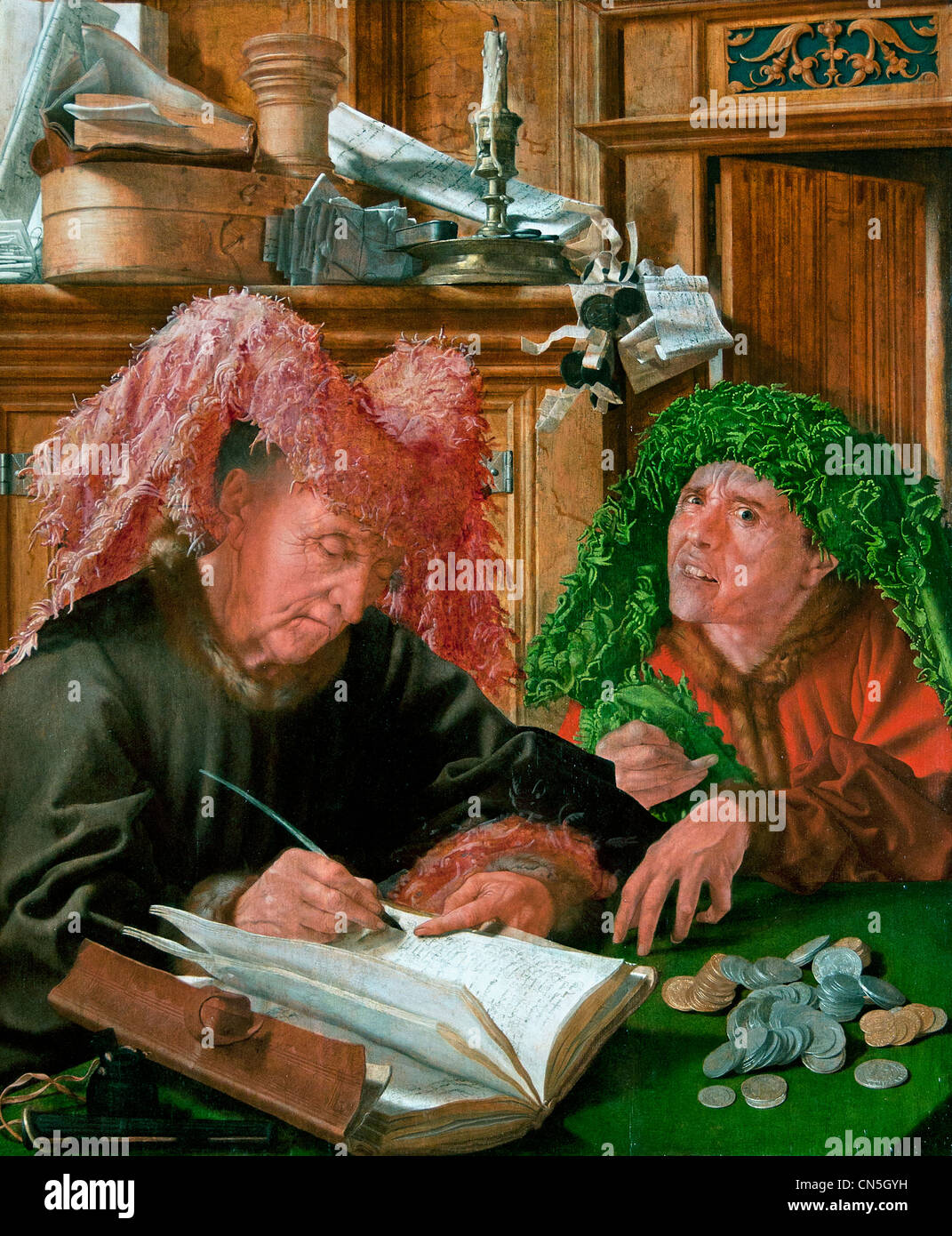
The moneychanger and his wife hires stock photography and images Alamy
Room 057A The Prado Tax Collector and his Wife (so-called Money Changer and his Wife) dated 1539 and gifted to the museum in 1934 is the second version of this subject recorded in Spain. Thanks to the recent research by Manuel Parada, it can now be identified as the earliest documented work by Marinus.

The Money Changer and his Wife, 1539 posters & prints by Marinus van Roejmerswaelen
The Money-Lender and His Wife. Massys Money-Lender and his Wife (1514, Louvre) (also called The Money-Changer and His Wife) appears to be an early example of genre painting which flourished in Flanders during the following 17th century. The husband and wife both wear bored expressions, as the man counts his money and the wife leafs through an.
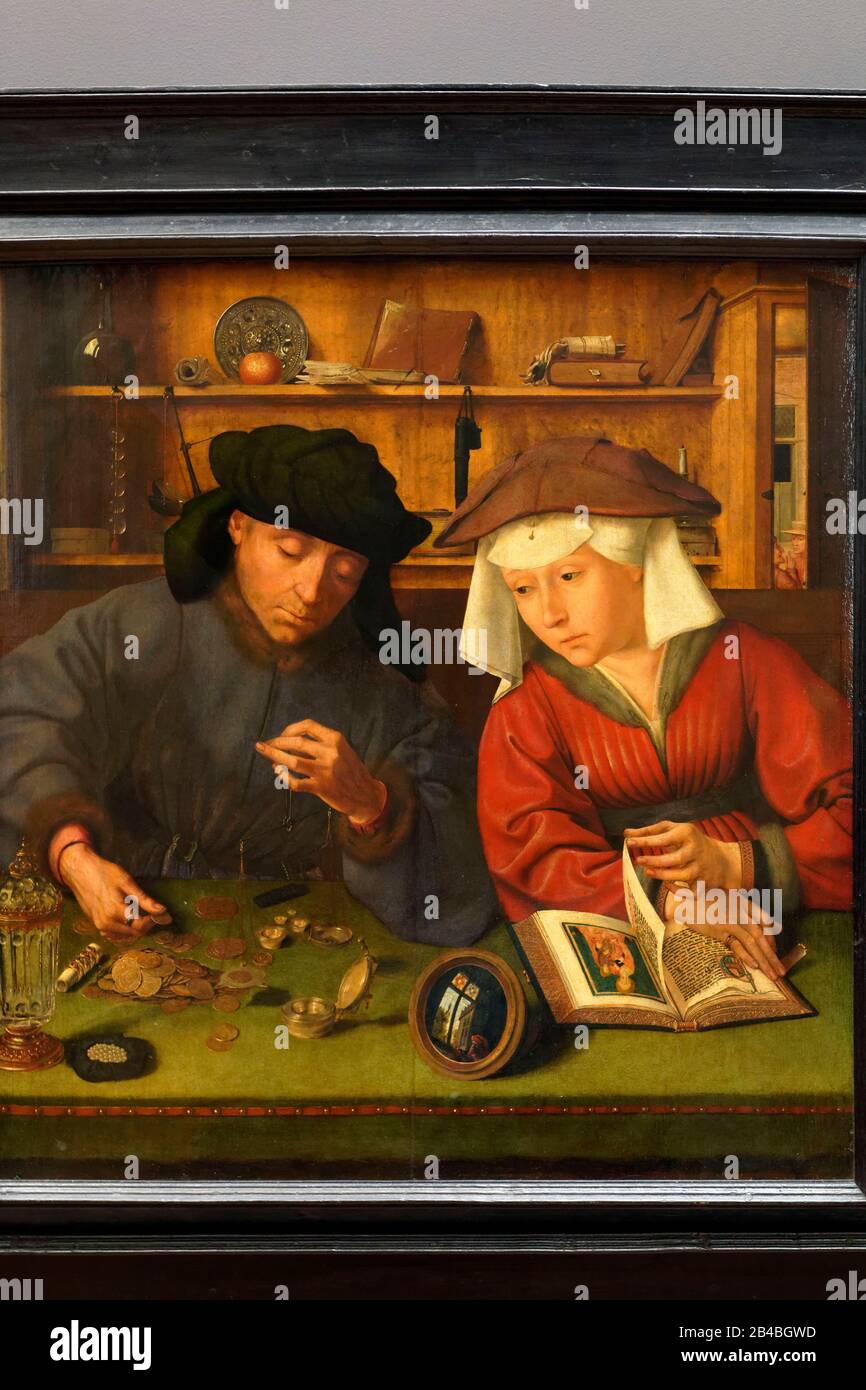
The money changer and his wife 1514 hires stock photography and images Alamy
The money changer and his wife - quentin massys. A man, who is weighing the jewels and pieces of gold on the table in front of him sits next to his wife who is reading a book of devotion with an illustration of the Virgin and Child. The couple is not dressed as members of nobility, but rather as well-to-do burghers of Antwerp, where the.

The Money Changer and his Wife, 1539 3 Ring Binder Zazzle Money changers, Artist, Art
Directed by: Meryam Joobeur Written by: Meryam Joobeur Produced by: Maria Gracia Turgeon, Habib Attia Mohamed is deeply shaken when his oldest son Malik returns home after a long journey with a mysterious new wife. 'The Moneylender and His Wife' was created in 1514 by Quentin Matsys in Northern Renaissance style.

15x12 Quentin Metsys The Money Changer and His Wife Etsy
Money-Changer and His Wife is a portrait painted by Quinten Massys in 1514. This 27 3 / 4 -by-26 3 / 8 -inch oil painting currently hangs in the Louvre. The focal point of the painting is a husband and wife shown from the bust up. They are counting their money with a green table in front of them.
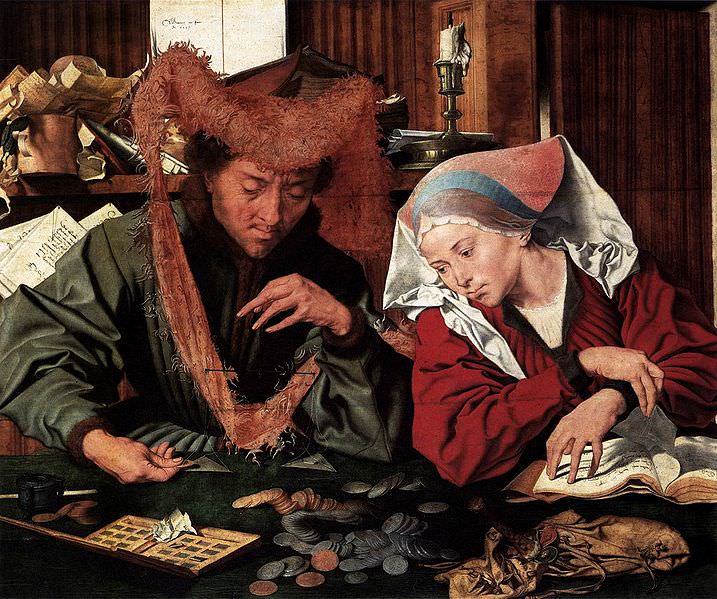
Marinus van Reymerswaele (Reymerswaele c.1490Middelburg, documented up to 1567), The Money
Quentin Massys - The money changer and his wife by Alexandra Tuschka Massys, already one of Antwerp's leading artists during his lifetime, often painted portraits of bankers, tax collectors and merchants. This painting, done in 1514, is one of his most famous works. The moneychanger here in the picture is intently checking the weight of the coins.

Quentin Massys Flemish Renaissance Painter & Engraver Britannica
The Money Changer and His Wife is a 1514 oil-on-panel painting by the Flemish Renaissance artist Quentin Matsys, currently in the Louvre Abu Dhabi . Painting A man, who is weighing the jewels and pieces of gold on the table in front of him sits next to his wife who is reading a book of devotion with an illustration of the Virgin and Child. [1]
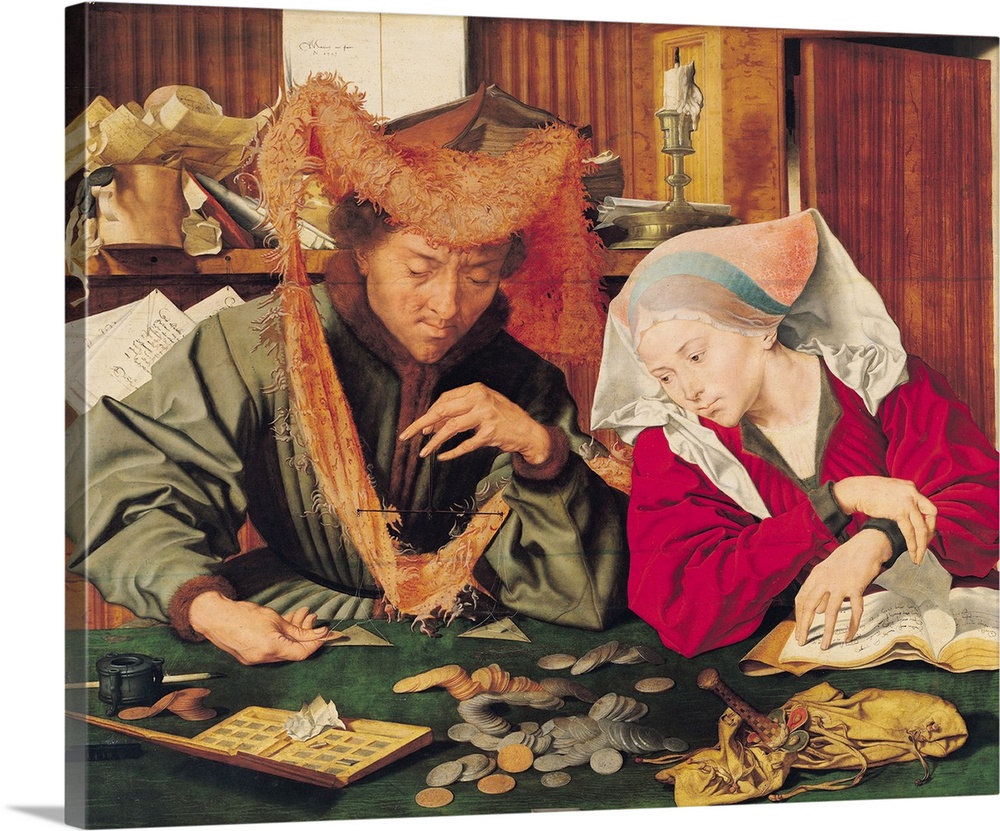
The Money Changer and his Wife, 1539 Wall Art, Canvas Prints, Framed Prints, Wall Peels Great
Professor Archias the money changer and his wife quentin matsys formal analysis typical to mastys, emphasis of his work is not on the surroundings, but on the. Skip to document. University;. Looking in on the money changer and his wif e, you get a sense of looking into the priva te.

The money changer and his wife 1514 hires stock photography and images Alamy
History of the Object's Creation. Quentin Massys was a Flemish painter born and raised in Leuven, Brabant, now part of Belgium, who lived his adult life in Antwerp, moving there in 1491. Antwerp was a major trading center where merchants from all over northern and southern Europe would exchange goods, so a great deal of money changing.